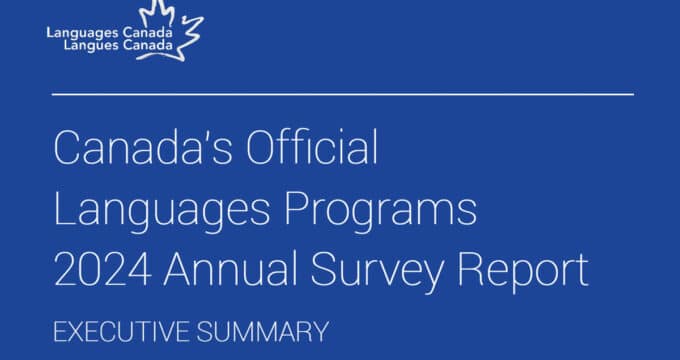Japan boosts internationalisation funding in a bid to climb global rankings
The Japanese government announced additional funding last month for 37 leading universities. The new spending aims to boost the international competitiveness of Japanese higher education overall, with the goals of further driving the country’s ambitious internationalisation efforts in higher education and placing more Japanese institutions among the top-ranked universities in the world. Education Minister Hakubun Shimomura announced the details of the “Top Global University Project” at a 26 September press conference. Designed as a 10-year project, the initiative places the participating institutions in two categories of "superglobal universities": “Type A” are the country’s top research and education institutions while “Type B” are expected to pioneer internationalisation efforts in Japanese higher education. The institutions were selected from 104 applicants by a ministry-appointed panel.
The 37 superglobals
“Type A” institutions will each receive about ¥420 million (US$3.8 million) in annual subsidies, whereas “Type B” universities will receive roughly ¥170 million (US$1.6 million) annually over the term of the project. The 13 “Type A” institutions are as follows: National universities: Hiroshima University, Hokkaido University, Kyoto University, Kyushu University, Nagoya University, Osaka University, Tokyo Institute of Technology, Tokyo Medical and Dental University, Tohoku University, University of Tokyo, University of Tsukuba. Private universities: Keio University, Waseda University. The researcher exchange facility at Hiroshima University The 24 “Type B” universities are: National universities: Chiba University, Kanazawa University, Kumamoto University, Kyoto Institute of Technology, Nagaoka University of Technology, Nara Institute of Science and Technology, Okayama University, Tokyo University of the Arts, Tokyo University of Foreign Studies, Toyohashi University of Technology. Public universities: Akita International University, University of Aizu. Private universities: Hosei University, International Christian University, International University of Japan, Kwansei Gakuin University, Meiji University, Rikkyo University, Ritsumeikan Asia Pacific University, Ritsumeikan University, Shibaura Institute of Technology, Soka University, Sophia University, Toyo University. Each institution will now be expected to carry out its individual plan for internationalisation and development, and, as such, each is immediately now a university with renewed potential as an international partner. The Japanese Ministry of Education, Culture, Sports, Science and Technology (MEXT) clearly expects that project-related initiatives will span a broad range of international engagement, including student exchange, faculty exchange, joint research, transnational education programmes, and perhaps even the establishment of schools or campuses operated in collaboration with foreign partners. Some of the participating institutions have publicly announced aspects of their plans under the “Top Global University Project”. Hiroshima University, for example, aims to be a top-100 ranked institution, and plans to boost the number of students it sends abroad by more than 400%, from 423 this year to 1,835 in 2023. It similarly intends to double the number of international students it hosts (up to 3,600 by 2023), and increase the number of classes taught in foreign languages from 397 today to 3,357 by 2023. Meanwhile, Okayama University, a Type B institution, plans to significantly expand courses offered in English, and to achieve a dramatic increase in the number of students scoring 700 or higher on the TOEIC English exam. Ritsumeikan University, also in Group B, plans to build new curriculum and courses focused on the development of problem-solving skills in collaboration with Japanese companies with substantial international operations. "If the 37 universities meet their goals, half of their teaching staff would come from abroad and a fifth of their classes would be taught in English," said Minister Shimomura.
In danger of being left behind
The Nikkei Asian Review provides the rationale for the Japanese government’s continuing focus on internationalising the country’s leading universities. “Over 20% of teaching staffs at many top universities abroad are foreigners. For example, 30% of Harvard's and 40% of Cambridge's are international. In Japan, the figure averaged just 4% in fiscal 2012. International students enrolled in bachelor's and master's programmes also only account for 2.9% of all students in Japan, which falls significantly under the 7.8% average among member states of the Organization for Economic Cooperation and Development (OECD). The country is falling behind on international cooperation in research as well. Just 26.4% of Japanese publications are co-authored by foreign researchers, compared with 52.4% of British publications and 33.4% of US ones.” As in many other countries around the world, the global university ranking tables provide a handy scorecard for Japanese educators and policy makers. And Japan clearly has ambitions to place more institutions in the world’s ranking tables – and at as high a position as possible. Currently, only the University of Tokyo (#23) and Kyoto University (#59) appear in the Top 100 of the Times Higher Education World University Rankings for 2014/2015. Both institutions are also found in the 2014 Shanghai ranking, and are joined there by another Group A institution, Osaka University (#78). The field opens up a bit more in the QS World University Rankings for 2014/15 where we again find The University of Tokyo (#31), Kyoto University (#36), and Osaka University (#55), but this time they are joined in the Top 100 by two other Group A universities: Tokyo Institute of Technology (#68) and Tohoku University (#71).
Building on ambition
The “Top Global University Project” builds on a foundation of ambitious internationalisation plans already set out by the Japanese government. These include the Global 30 Project, through which leading Japanese universities offer complete degree programmes in English, and a broader goal to build international enrolment in the country to 300,000 students by 2020. The government has also taken steps to expand support for outbound student mobility and has announced reforms to further internationalise Japanese curricula through the expansion of English language instruction in primary grades as well as a proposed redesign of university entrance exams.
Most Recent
-
The surging demand for skills training in a rapidly changing global economy Read More
-
US issues corrected student visa data showing growth for 2024 while current trends point to an enrolment decline for 2025/26 Read More
-
Survey finds US institutions expanding agency engagement and focusing on new student markets Read More


















